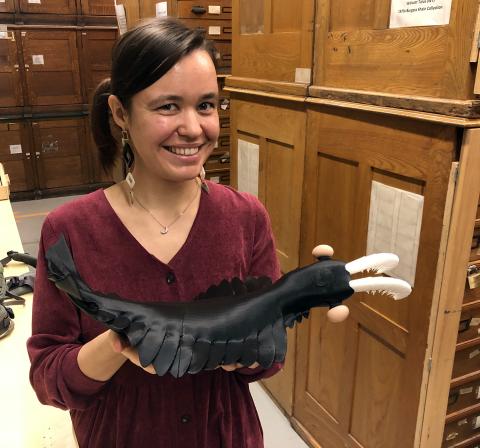Guest Speaker: Natalia Bykova
Precambrian Geobiology of the Olenek Uplift, northeastern Siberian Platform
Dr. Natalia Bykova
The sedimentary cover of the Siberian Platform starts from the Mesoproterozoic (Riphean) when the system of aulocogens opened all around the craton. One of the windows into the early history of the Siberian Platform is the Olenek Uplift. The Mesoproterozoic Sololi Group (~ 1,5 – 1,1 Ga) represented by mixed carbonate-siliciclastic deposits hosts the macroscopic fossil Horodyskia, eukaryotic microfossils and abundant microbial structures. There are three intervals where the fossils were found, and they coincide with the higher oxygen concentration intervals, based on the geochemical studies. Thus, it is possible that abundant microbial communities were responsible for the elevated oxygen content. Between Mesoproterozoic and Neoproterozoic rocks there is an unconformity, which is sometimes referred to as the Great Siberian Unconformity. The Neoproterozoic part of the succession is represented by the Khorbusuonka Group (~600 – 540 Ma). The Khorbusuonka Group is a carbonate-rich succession, restricted only to this region, with multiple ash layers, which suggests a rift nature of the basin. It hosts the oldest trace fossils of Nenoxites, Ediacara-like fossils (e.g. Aspidella, Charnia), a rich assemblage of macroalgae and small shelly fossil Cambrotubulus. The sediment reworking by Nenoxites in some intervals riches almost 100%, suggesting the Phanerozoic levels of sediment disturbance by ~ 550 Ma. The Ediacara-like fossils are shown to be tolerant of the low-oxygen concentrations. The Khorbusuonka Group hosts the biggest Precambrian macroalgae fossils in the world (up to 3 m in length), proposing a big macroalgae forest existence by this time. Thus, during the Proterozoic the Olenek Uplift witnessed the appearance of one of the first eukaryotes, oxygen level fluctuations, the rise of animals, the first substrate revolution, biomineralization and explosion in morphospace of macroalgae, making it a perfect place for the geobiological investigations.
